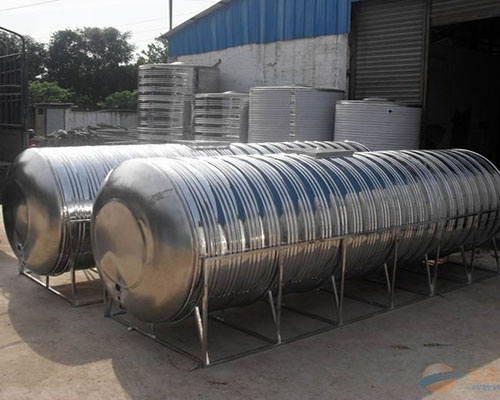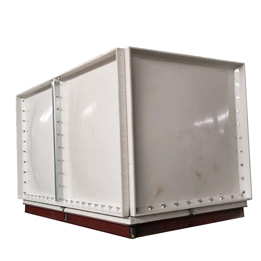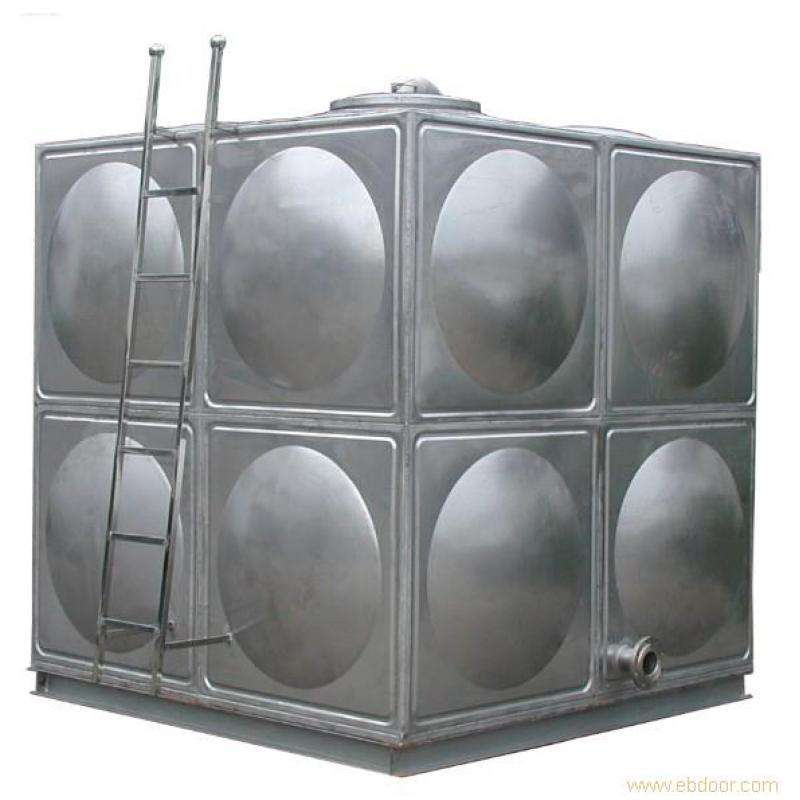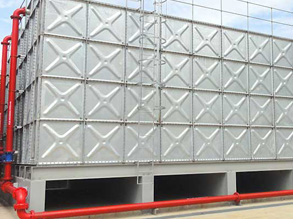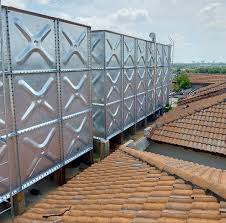What is rain harvesting?
Rainwater harvestingmainly involves the collection of water from rain coming from all possible platform in the surface and storing it for later uses. In the normal practice of rainwater harvesting, collection of water coming from the rain through the roof and storing it in a water tank is very common to happen.
In storing this rainwater, you need to choose for the best tank material since it is quite crucial as you are doing this for not just a day of storing but, if possible, for a longer time. Since not only through collection of water from the roof can be made possible in rainwater harvesting but also through collecting rain falling on the ground, the tank material that you will choose will really matter.
Why harvest rainwater?
There are many possible reasons why you choose to harvest rainwater. As a matter of fact, the reality in using rainwater brings a significant benefits in social, environmental, and economic considerations. Some of these reasons may fall on the following considerations listed below:
1. Reducing your dependence to the main water supply which needs you to pay every month. In this way, it can make you save money from your water bills and give you freedom from being affected it water supply intermittence occur in your area.
2. It could be a necessity to have your own rainwater harvesting system. Specially in densely populated areas, water supply could be an issue to sustain every living individual requirement daily. Putting up your own rainwater harvesting system means having supplement water supply even if the main supply is not giving any.
3. Saving money. Mainly for economical reasons, having your own rainwater harvesting system is a long time investment for your to save more money in terms of your water consumption.
4. To meet regulations. There are some states and suburbs that requires installation of rainwater system for water and energy efficiency purposes. Choosing for the best tank material is a good option, just like stainless steel water tanks.
5. For health and personal preference. Some people prefers to drink fresh water without any artificially added chemicals. Having a purified and potable rainwater at home could be a good choice.
6. For environmental considerations. By doing your own rainwater harvestingwill mean you are helping in reducing the impact of stormwater runoff in your area. This way, you are already helping the environment to maintain its cycle away from being damaged and disturbed.
What are the best tank materials for rainwater harvesting?
As a rainwater harvesting tankbuyer, you must know what tank best fits your need. This will, for sure, answer as to how large and how long you are going to use the tank. Durability and performance is what matters most in the tank that you are going to choose.
The most common tanks available to be used for rainwater harvesting are the following:
1. Stainless steel water tank
Since this material is known for its durability and strength, this could be a good choice. Aside from the fact that it also resists corrosion, it brings a lot of advantages if to be used for rainwater conservation.
Although it brings an impression of being expensive, yet, in the long term use and for maintenance concern, you can repair it simpler than other tank material. Small holes can be easily welded while large ones can be simply patched with new stainless steel material without worrying further on corrosion issues as this material itself give the provision of not needing any coating to avoid rust.
2. Fiberglass reinforced plastic (FRP tank)
FRP tanks are robust and are also easy to repair by skilled fiberglass worker. Like stainless steel water tank, it also offers advantages if to be used for rainwater collection.
The only downside of this material is the fact that it is not recyclable if come to its lifespan of usage which will most likely to end up in landfill. Other than that is already an array of positive features just like having a high strength tension rings and seamless walls.
3. Concrete water tank
Concrete water tanks are the typical way of collecting rainwater. However, if you need your tank to be mobile, then this material will not be of good choice.
Although there are pre-made concrete tanks available for you by delivery, you need to establish well the base where to put it as stability is of high importance for it to be well placed and avoid failure of installation.
The other way to have a concrete water tank is the common practice of pouring and molding the concrete on site. If you are looking for affordability and doing your tank underground, then concrete water tank could be a better choice for you but if you are thinking on being mobile in the long term run, and then maybe you need to opt for the other tank material.
What are the rain water harvesting methods?
In a broader sense, there are two types of rainwater harvesting:
1. Surface runoff harvesting
Surface runoff harvesting, especially in urban areas, is a good way of practice if applied with appropriate methods to recharge aquifers.
Based on US Geological Survey, the moment when rain or snow drops into the ground, it just not stay there as it will move according to the laws of gravity. Part of it will seep into the ground to recharge Earth's groundwater while most of it will flow downhill and this is the where runoff happens.
This way of harvesting could be made possible by some programs initiated by government funded projects or on some non-governmental organizations working towards water conservation and further environmental advocacies.
2. Roof top rainwater harvesting
Rooftop rainwater harvesting is an an engineered system of catching rainwater from where it falls. Mainly the roof, in this method, becomes the catchment. The water collected can then be stored into a tank made of material of your choice like stainless steel water tankor FRP tank.
Doing this method will make you save a lot of money and can be done solely which means having your own rainwater harvesting in house. It is proven effective and augments the level of groundwater in your area.
These are the four rainwater collection systemthat constitutes in rooftop rainwater harvesting:
a. Catchments
How to collect rain wateris mainly through the catchments. It is the surface which receives directly the rainwater falling from precipitation. It could be your roof, a courtyard, a terrace, or a paved/unpaved open ground.
b. Transportation
Transportation happens is when rainwater from the rooftop travels down through the pipes into the harvesting system which is your tank of choice. One things to keep an eye in doing this is for you to make sure that the water pipes that you will be using should be UV resistant.
If your house has a sloping roof then rainwater could be easily collected through gutters then next down to the pipes directing to your tank. You should then install a wire mesh at the end of each pipe drain to restrict any floating material going into your storage tank.
c. First flush
You need to flushed-off the first shower of rains to avoid contaminating storable water by possible contaminants from the atmosphere and catchment roof. To do this, you need to use a device called first flush.
d. Filter
Filter mechanism should always be considered starting from the roof catchment area until to the storage tank especially if you choose your tank to be underground. Underground leaking from sewer drains could happen within close vicinity, thus filtration is a must to your stored water.
Filters are the one that is used for water treatments to successfully remove microorganisms, colour, and turbidity. Directly from the rain, water coming from your catchment area should pass through filters first before it will go to your water tank. This part plays a big role in the importance of rainwater harvesting.
Ideally, after knowing the profound rainwater harvesting meaning, storing a clean water is a big consideration. According to Icce-2006 Inc, you need an in-home water filtration system as the system will do something to remove chemicals from that water that you will be using for safety purposes. These filtration system can be acquire by either buying it directly from manufacturers of installing your own system at home.
What are the common types of filters being practiced to provide further benefits of rainwater harvesting?
In the application of rainwater harvesting, knowing the filtration practiced is good for you to consider for your entire system at home. By doing this, you can utilize best the uses of rainwater harvesting.
Here are the types of filtration process you can add in your rain water harvesting techniquesat home:
1. Sand-Gravel Filter
Sand-Gravel filter is the very common filtration processed which could be done simply by fixing the sides of the filter system leaving the bottom free but with a wire mesh. This wire mesh will serve as the platform to where the layers of sand (in contact directly of the unfiltered rainwater), gravel (lower layer next to sand), and pebbles (the bottom part of all three materials) will settle. Each layer should be separated by a wire mesh to keep each material intact and perform their role in filtering the unwanted contaminants in the rainwater to be stored.
2. Charcoal Filter
This type of filtration process with charcoal can be made in-situ or through using a drum that will serve as a chamber. In the chamber, with each layers separated by a wire mesh, should be put first in the bottom part is 25 cm gravel, then top of it would be 22 cm of sand, top of it would be 10 cm of charcoal, then lastly, top of it would be 10 cm gravel.
The charcoal here helps absorb odor, it there exists.
3. PVC Pipe Filter
This filtration system can be made by using a PVC pipe of 1 to 1.2 meters in length. The diameter of pipe will greatly depend on the area of your roof. For example, in a 1,500 square inches roof, 6 inches diameter would be best to use, but larger than than, the 8 inches is more applicable.
You need to divide the pipe into three compartments with a wire mesh. Each layer, with wire mesh, should be placed with sand, gravel, or optional addition of charcoal. Both ends of the filter should have a lesser diameter that will serve as an inlet and outlet. You can use this kind of filtration system in either horizontal or vertical placement.
4. Sponge Filter
The easiest and maybe the cheapest among other form of filtration process, this can be done by simply putting a layer of sponge in the middle of your filtration chamber. You can use a PVC drum to serve as your chamber.
What are the purpose of different types of rainwater harvesting?
To further illustrate the purpose of rainwater harvesting, you should learn the following:
1. Storage for Direct Use
In using the collected rainwater from catchment through filtration system and into the tank for direct use is the most common purpose among all. In this part, you should know the tank capacity and the material you need to choose based on your catchment availability the water requirements you have at home.
2. Recharging groundwater aquifers
Groundwater water aquifers should be recharged to maintain the cycle of water in the ecosystem according to The Constructor. To do it, the following recharging methods are considered:
a. Recharging of bore wells
Bore well is a long and narrow pipe drilled into the ground from your filtration system to directly allow rainwater drain into the aquifer.
b. Recharge pits
These are composed of small pits, either in rectangular or circular shape, with walls contract by a brick or stone masonry leaving the bottom open free. From your filtration system, a pipe will drain the filtered rainwater into the pits allowing these water to recharge the aquifer underneath.
c. Soakway or Recharge shafts
Holes of around 30 centimeters in diameter up to 10 meters to 15 meters deep, these holes should be slotted with perforated PVC pipes. From the filter system, water will directly drain into these holes allowing the water to recharge the aquifer below.
d. Recharging of dug wells
Dug wells can also give solution on how to store rainwater. With a total consideration that rainwater coming from your catchment area, it should undergo through a filtration process, letting the filtered water into the dug well is one of the best way to recharge the aquifer underneath.
e. Recharge trenches
Here appears a trench purposely excavated and filled with porous materials like pebbles and boulders. This applicable on areas like playgrounds, parks, and roadsides to collect rainwater runoff for the purpose of recharging the aquifer below.
f. Percolation tank
This is an artificial surface body of water, purposely situated in a land area having adequate permeability to allow sufficient percolation for the recharge of groundwater in the aquifer.
What are the rainwater harvesting tools?
According to Wikiversity, rainwater harvesting definitionreflects to its tools applicable to be used at home or for any project planning development. See the list below:
1. 3R (Recharge, Retention, & Rescue)
The 3R method provides importance of rainwater harvestingwhich stands Recharge, Retention, and Reuse. This method supports on the arguments about recirculation in the water chain, climate change adaptation, and green water management.
2. Business Development - Micro-financing
either of the rain water harvesting methodsappears to be quite expensive especially to rural areas pertaining to less fortunate communities, NGO's are doing their part to develop and encourage financial set-up for rainwater programs through business development in a way of micro-financing.
3. Multiple Use Services (MUS)
This is considered to be an innovative approach to water services. This is mainly for the poverty reduction purpose to unlock new investments and gender equity in rural areas.
4. SamSam RWH Tool
With the benefits of rainwater harvestingat home, this tool is more applicable for you. It will take you through 4 steps towards finding for the best harvesting system working best for you.
First is you need to choose a location of where you should locate your entire rainwater harvesting system. Next is to identify the size of your roof. Then calculate the water usage you have per day in liters. And lastly is to to use the Sam Water Rainwater Harvesting Tool which can be found at to get a summary of results for you to see.
5. Rain is Gain Tool
This is a trusted alternative method to the conventional one of rainwater harvesting. It will allow you to estimate the amount of water requirement which can be covered by collecting and storing rainwater.
6. Rainwater Harvesting GIS Map
This method teaches to gather, store, use, and reuse rainwater in an easy way. To do it, you should follow these three simple steps:
A. Collect data for input in GIS model
B. Assign scores and weights to each data sets
C. Combine and analyze the selected data sets
7. WASH Environmental Sustainability Assessment
This method is applicable in both urban and rural contexts. It is composed of three steps:
A. Assess
B. Analyse
C. Understand and Optimize
Rainwater harvesting Facts and Figures
●You should care about rainwater harvesting in support to the quest for water conservation since you can collect of up to 80% of the annual rain that falls on your own catchment area at home if you you sincerely devote your system to a better quality having a good choice of water tank just like GRP water tanks or stainless steel water tanks.
●For an average of 25 feet by 40 feet house roofing can give you around 600 gallons of water in 1 hour even just for a moderate rainfall. This means that you can already collect an ample amount of water coming from the rain, saving you money to pay for water bills.
●You need to identify carefully the capacity of tank that you want to purchase, whether it is a GRP tank or made from other materials, to avoid failure in between support and capacity. A tank containing 264 gallons weighs around 2,204 pounds.
●Average rainwater harvesting system stores 1,000 gallons of water but for home use, you have the option to a smaller capacity of 55 gallons or for commercial use up to 10,000 gallons.
●40% of household water consumption is used for domestic irrigation. If this water is coming from your water provider then it would cost you money, however, if this amount of water is simply coming from your rainwater harvesting system, then it's totally free.
What are the do’s and don'ts in your rainwater harvesting system?
Do's:
●Make sure you placed your barrels under a downspout.
●Use a screen to filter out unwanted leaves and debris into your system.
●Make sure to use a first-flush diverter to lessen water contaminants.
●Installing an overflow port to your system is a better idea to control excess water.
●Schedule a seasonal maintenance to make your system working properly.
Don'ts:
●Avoid to place barrels near septic tanks or other utility services.
●Never forget to cover any openings of your barrel and always keep it uncovered.
●Avoid drinking untested and unfiltered rainwater.
●Avoid in foregoing pea gravel. Drainage is very important during barrels overflow.
●Never forget to drain your tank in every 3-5 years.
After knowing everything about rainwater harvesting, how to do it, choosing for the best materials is the next thing you should consider. With all the considerations available for you, one thing for sure is that having your own system at home will give you a lot of benefits. Start your own rainwater harvestingnow by grabbing one of our available water tank material of your choice.

Hot Water Tanks
related posts
